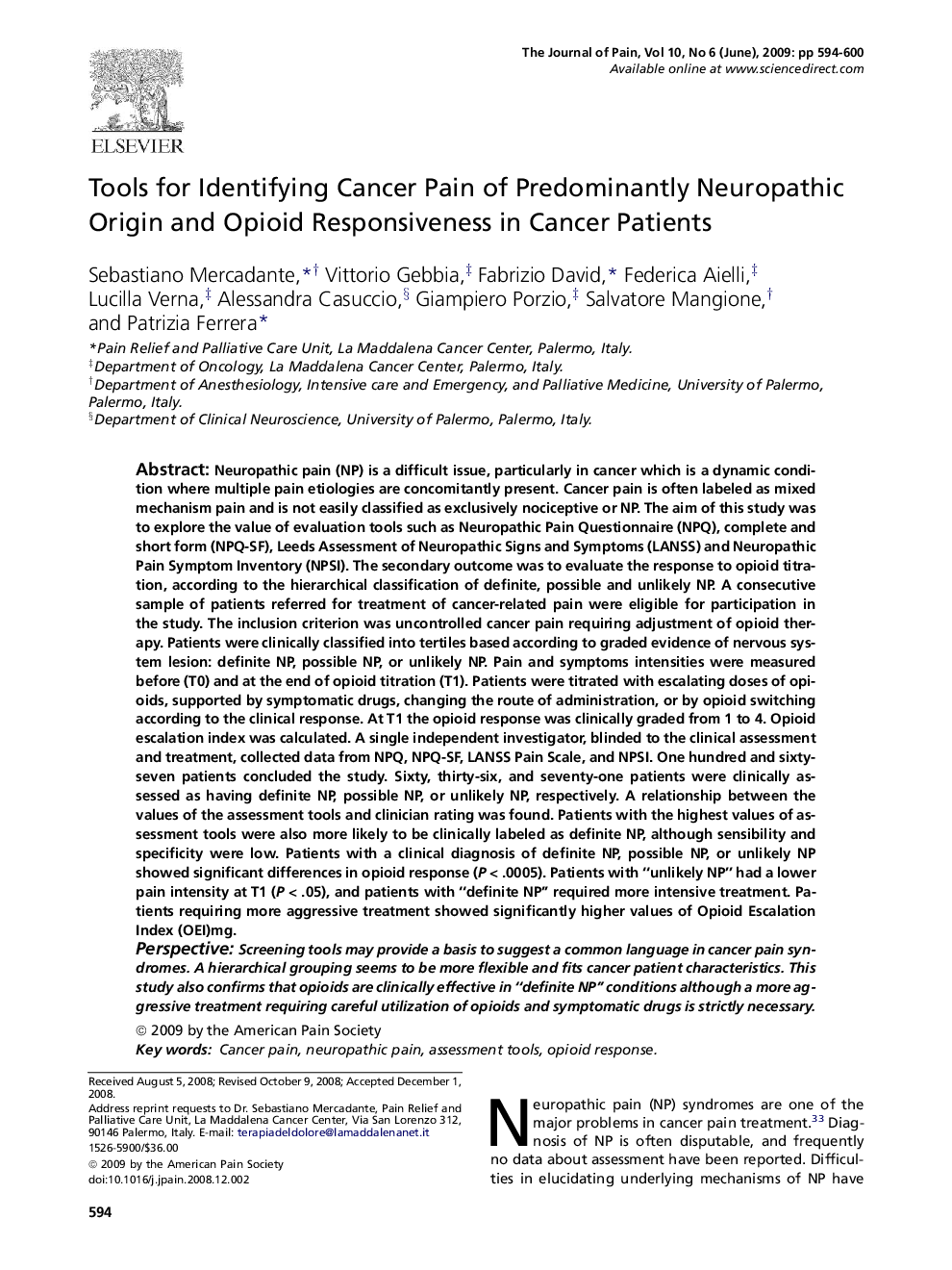| کد مقاله | کد نشریه | سال انتشار | مقاله انگلیسی | نسخه تمام متن |
|---|---|---|---|---|
| 2732729 | 1566813 | 2009 | 7 صفحه PDF | دانلود رایگان |

Neuropathic pain (NP) is a difficult issue, particularly in cancer which is a dynamic condition where multiple pain etiologies are concomitantly present. Cancer pain is often labeled as mixed mechanism pain and is not easily classified as exclusively nociceptive or NP. The aim of this study was to explore the value of evaluation tools such as Neuropathic Pain Questionnaire (NPQ), complete and short form (NPQ-SF), Leeds Assessment of Neuropathic Signs and Symptoms (LANSS) and Neuropathic Pain Symptom Inventory (NPSI). The secondary outcome was to evaluate the response to opioid titration, according to the hierarchical classification of definite, possible and unlikely NP. A consecutive sample of patients referred for treatment of cancer-related pain were eligible for participation in the study. The inclusion criterion was uncontrolled cancer pain requiring adjustment of opioid therapy. Patients were clinically classified into tertiles based according to graded evidence of nervous system lesion: definite NP, possible NP, or unlikely NP. Pain and symptoms intensities were measured before (T0) and at the end of opioid titration (T1). Patients were titrated with escalating doses of opioids, supported by symptomatic drugs, changing the route of administration, or by opioid switching according to the clinical response. At T1 the opioid response was clinically graded from 1 to 4. Opioid escalation index was calculated. A single independent investigator, blinded to the clinical assessment and treatment, collected data from NPQ, NPQ-SF, LANSS Pain Scale, and NPSI. One hundred and sixty-seven patients concluded the study. Sixty, thirty-six, and seventy-one patients were clinically assessed as having definite NP, possible NP, or unlikely NP, respectively. A relationship between the values of the assessment tools and clinician rating was found. Patients with the highest values of assessment tools were also more likely to be clinically labeled as definite NP, although sensibility and specificity were low. Patients with a clinical diagnosis of definite NP, possible NP, or unlikely NP showed significant differences in opioid response (P < .0005). Patients with “unlikely NP” had a lower pain intensity at T1 (P < .05), and patients with “definite NP” required more intensive treatment. Patients requiring more aggressive treatment showed significantly higher values of Opioid Escalation Index (OEI)mg.PerspectiveScreening tools may provide a basis to suggest a common language in cancer pain syndromes. A hierarchical grouping seems to be more flexible and fits cancer patient characteristics. This study also confirms that opioids are clinically effective in “definite NP” conditions although a more aggressive treatment requiring careful utilization of opioids and symptomatic drugs is strictly necessary.
Journal: The Journal of Pain - Volume 10, Issue 6, June 2009, Pages 594–600